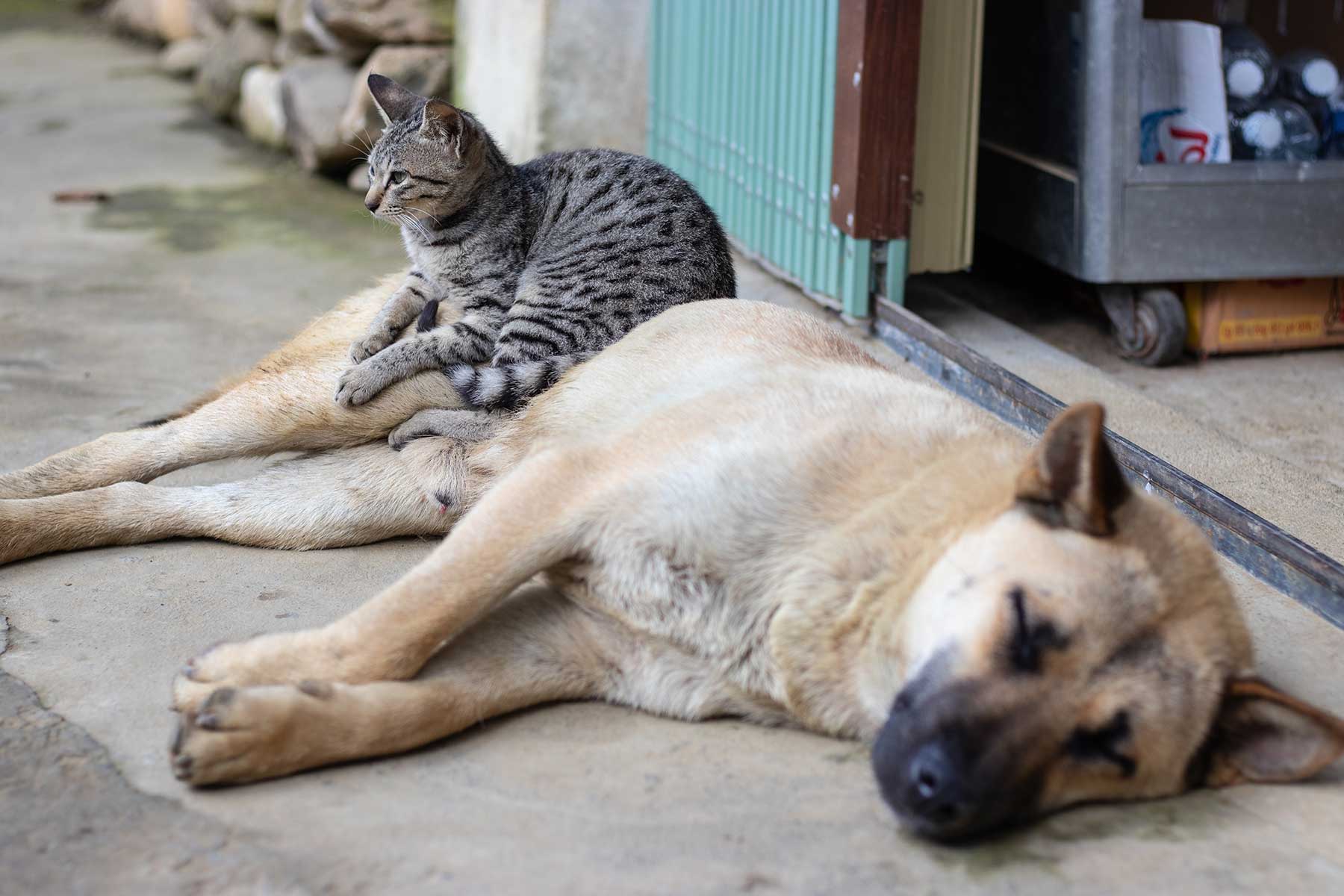Heatstroke (hyperthermia) is the elevation of the body’s temperature and is a life-threatening condition requiring immediate treatment. Dogs left in hot cars, pets exposed to extreme heat when left outdoors, lack of adequate shade or being exercised in hot weather can all lead to heat stroke. Heatstroke is most common in dogs, especially “brachycephalic” breeds (those with short muzzles eg. Bulldogs, Pugs etc).
Other predisposing factors can be diseases of the pet’s airways or obesity. Your veterinarian will look into the underlying cause once your pet is stabilised.
What to look out for – signs
Initially, your pet will appear distressed, they will pant excessively and become restless. As the situation becomes worse and the body temperature increases they may drool copious volumes of saliva and become unsteady on their feet. You may notice your pet’s gums become a bluish-purple or bright red colour. This is due to the inadequate oxygen supply to the tissues.
First Aid
Cool your pet on the way to the vet by using a fan or air-conditioning to maintain airflow over the body. You can also use a spray bottle to lightly cool them with water. This initial home treatment greatly increases the chance of surviving. Warning – do not submerge your pet in ice-cold water, this can have detrimental effects on your pet’s recovery.
Seek veterinary attention for your pet immediately as intensive care is generally required to save your pet’s life. It is only in mild cases that the initial home cooling is adequate treatment.
Veterinary Treatment
On arriving at the veterinary hospital your veterinarian will assess your pet and determine the treatment required. The more severe the case, the more intensive care will be required.
Intravenous fluids are needed in heatstroke cases. The Intravenous fluids cool the body, maintain blood pressure, support the kidney system and generally help speed recovery.
Your pet’s airway will need to be maintained and excess saliva kept clear from the mouth at all times. Oxygen may be required. At times sedation is needed to allow safe, effective ventilation
Your veterinarian will closely monitor your pet. This generally involves observing changes in body temperature, blood tests and urine examinations to assess the extent of damage and their progression.
Preventing heatstroke
There are a few steps you can take to help prevent heatstroke. These include:
- Ensure your pet has plenty of fresh, clean water at all times. If outside, place water in a shady area. Consider using frozen water bottles and/or ice to keep it cool. It’s recommended to provide a number of water bowls in different areas.
- Some pets love to tip over water dishes, ensure they are large and made of heavy material and keep a spare one handy for them.
- NEVER leave your pet unattended in a car. Cars heat up very quickly and are the most common cause of heatstroke. Even if you open the windows it does little to slow the overheating process. Pet’s do not sweat rather they evaporate heat by panting. Panting requires large amounts of air to move heat away from your pet and when the heat is trapped in the car, they can literally overheat and die within minutes.
- Avoid exercising your pet during the hottest hours of the day, especially in the summer months. Enjoy early morning and evening walks but keep your pet away from the pavement and hot bitumen during the heat of the day. Humid days can often be just as bad or worse than very hot sunny days, so keep this in mind too.
- If walking your dog for any long period of time ensure you stop to let your pet rest, get some shad and drink on a regular basis. Collapsible water bowls are a very handy walking accessory, to keep your companion hydrated.
- If pets are to be left outdoors during hot weather ensure they have adequate shade to shelter from the sun.
- Allow your pet to wander around the yard so they can pick a cool spot during the day.
Although most commonly seen in dogs, all animals can be affected by heatstroke.
If you think your pet is in distress, phone your veterinarian immediately for advice. Your quick actions could save your pet’s life.
Your pet’s body may feel burning hot and, as the body temperature continues to climb the animal will collapse, become comatose and, if veterinary treatment is not sought immediately, may soon die.
Other tips for a safe summer
- Pets can get skin cancer too. If your pet loves to laze around in the sun, slop on a pet sunscreen, especially to pink or white noses!
- For some unlucky pets, flies can cause irritation and leave bleeding ear tips. Keep them away by spraying a special fly repellent for pets or ask us for more information on dealing with flies.
- Most dog’s love to fossick at the beach, unfortunately, one of their favourite treasures are dead fish. Never let your dog eat or chew on dead fish, particularly blowfish. Not only will they make your companion very ill they can also cause fatal injury if left untreated.
Make summer fun
If your dog is a water lover purchase a children’s plastic pool and half fill it with water. This becomes an additional water bowl and they can also play, splash, dig, lie down and have loads of fun in it!











